Top and bottom pots $80
Optional Stainless distiller tube $10
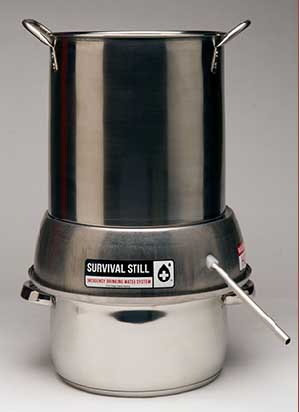
Survival Still
Order
here
Two piece still alone $279
Top and bottom pots $80
Optional Stainless distiller tube $10

The Survival Still is a non-electric water
distiller that purifies water by boiling the water and
collecting only the pure steam (a process called distillation). The result;
consistently pure water
from virtually any water source, without the use of filters. If you’re in an
emergency, you can purify
water from your swimming pool, a stream, a lake, a mud puddle, rainwater off the
roof, or even the
ocean, for as long as is needed. You do need a heat source capable of boiling
the water.
What's needed to make this work is four
things:
1. A heat source that is not shown in the picture below. This can be a simple
wood fire, top of a
wood stove, an electric burner, a gas burner (nat gas or propane). The heat
source brings to a boil
the water that is in the bottom most pot - the white pot shown below.
2. A pot that the contaminated water is contained in - the white pot shown
below. This is the water
we need to bring to a boil and distill and turned into clean water.
3. The distiller itself; the middle piece in the picture below that has the
Survival Still sticker on it.
4. The upper pot filled with cold water which condenses the steam in the
distiller. The clean drinkable
water comes out the angled tube in the side of the distiller. When this water
gets hot it should be
changed out for colder water as it is the cool water in this top pot that
condenses the steam back into
a liquid.
The distiller is sold as a separate unit although you can order a top and bottom
pot to go with it.

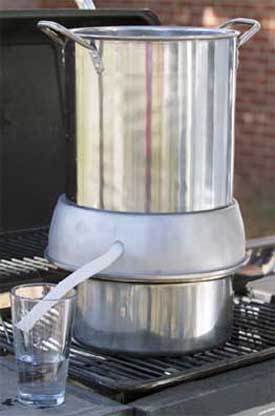
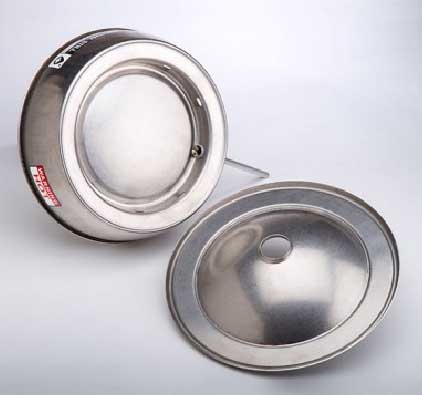
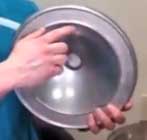
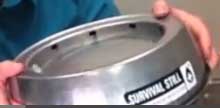
Optional stainless steel distiller tube
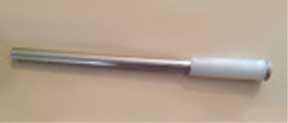
The Survival Still…
• Permanently supplies high-purity, sterile
drinking water.
• Extremely effective against all types of contaminants.
• Kills and removes bacteria, viruses and parasites.
• Is a permanent solution for purifying sea water.
• Does not need filters, maintenance, infrastructure or a supply chain.
• Distillation is recommended by FEMA and the Red Cross!
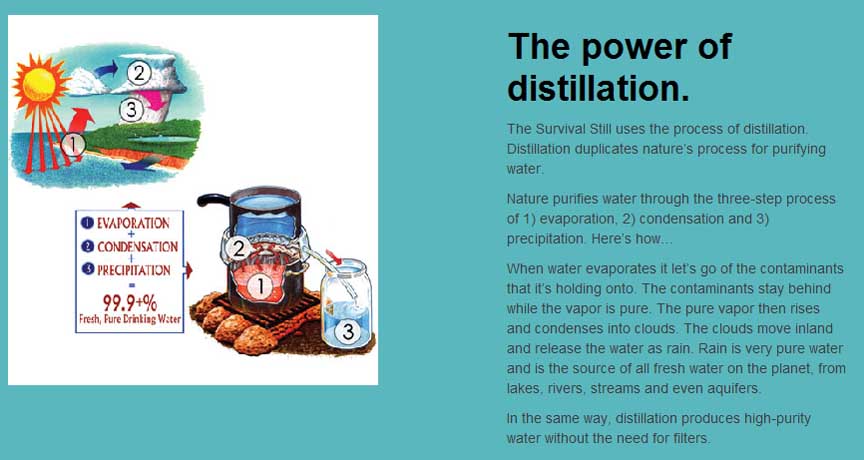
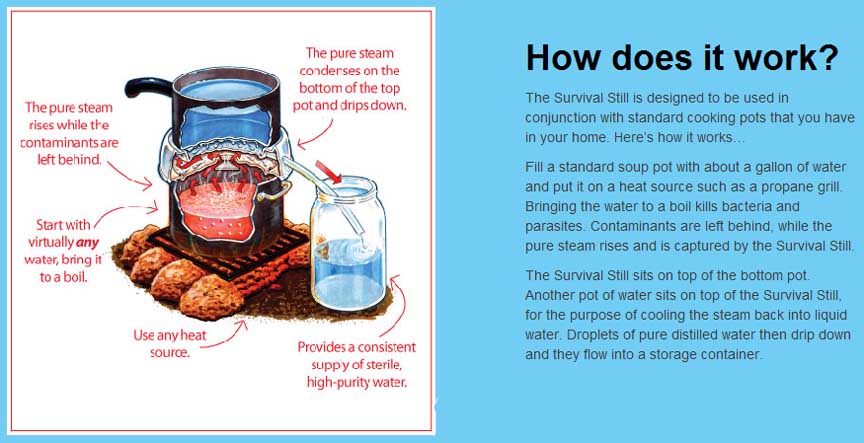
Ocean Water?
Early last year testing was done on on ocean water. The water was highly
contaminated, yet with
one pass through the Survival Still, the water was better than 95% of all
bottled waters on the market!
If you want to get technical, the ocean water started out with over 30,000 parts
per million (ppm) of
contaminants (regular tap water is usually around 250 ppm) and ended up at only
6 ppm! This was a
99.98% removal! The important point to remember however is that these results
will remain consistent
forever!
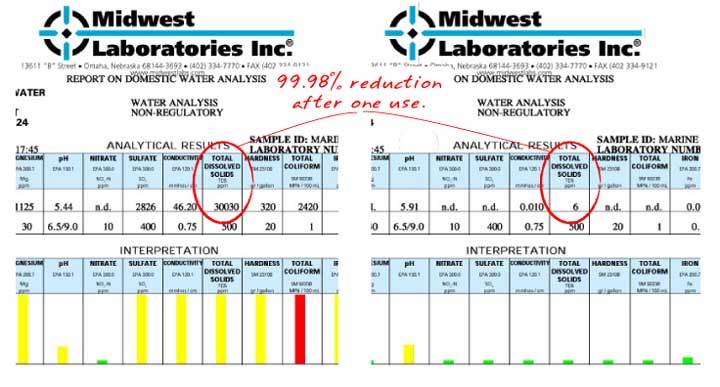
FAQ
Question: How fast does the Survival Still produce safe
drinking water?
Answer: The rate of production of the Survival Still depends
upon amount of heat that is applied. Some heat sources are hotter than others.
For example, you can bring water to a slow boil, or a rapid boil. The rate of
the Survival Still typically ranges between 1 quart and 2 quarts per hour.
Question: What about solar power as a heat source for the
Survival Still?
Answer: I apparently have a couple customers who use a solar
cooker with the Survival Still, and they say that it works fine. The type of
solar cooker that they use is the type that looks like a satellite dish. I don't
have much experience with this though, but I will pass on their experiences in a
future article on my blog.
Question: If
I can't distill water to purify it, what's the next best way to go?
Answer
(from the manufacturer) :
The ranking of different processes is, distillation is the best, followed by
boiling and then chlorination. Boiling and chlorination should be used after a
filter, and you have to use your knowledge about the situation to determine what
the best method is. For example, as you know from the class that we gave, you do
NOT want to use boiling and chlorination on the West Virginia chemical spill.
The above is the Survival Still manufacturer's opinion. I would never drink
chlorinated or fluoridated water.
My opinion would be to first use a Berkey Gravity filter as you see at www.potspansandfilters.com/berkey.htm
as in the pic below, or use a gravity filter setup with a
Doulton
filter as described at www.potspandandfilters.com/waterfilters.htm
Big Berkey above about $261
Question: What if you don’t
have enough fuel?
Answer: If you don’t have enough fuel to use a water
distiller, you will have to resort to some other method, such as chlorine
tablets. The question about fuel however, is often a matter of priorities. Often
after a disaster situation, there is plenty of potential fuel around. Remember
that the Survival Still can be used with any heat source, including a simple
campfire, as long as it’s hot enough to boil water.
Question: What are your thoughts on water purification tablets?
Answer: If they are chlorine tablets, yes they are good.
Chlorine tablets that are specifically made for disinfecting drinking water can
in fact be better than liquid bleach, because it is a more stable form of
chlorine. Chlorine tablets and/or bleach should definitely be part of your water
prep kit. Remember however, that you MUST follow the instructions, and also
remember the limitations of chlorine, ie. that it is only effective against
biological contaminants.
From Ber - again chlorine tablets or bleach for me
would be an absolute last resort.
Question: What is the shelf life of bleach?
Answer: First of all, let me remind you that you should only
use basic, non-scented, non-color-safe bleach. The shelf-life of bleach is one
year from the manufacture date. So how do you tell when a bottle of bleach was
manufactured? I wrote to Clorox to ask them how their date code system works,
and this is what they told me, “We follow the Julian date code system. An
example of our code would be G18099. There may be other plant information that
follows, but that is not important to the date of the product itself. The first
two characters of the code will be the plant, in the example above that would be
G1. The third character of the code is the year the product was manufactured. In
the example above that would be 2008. The forth, fifth and sixth characters
stand for the day of the year the product was manufactured on. In the example
above that would be the ninety-ninth day of the year or April 8th.” Remember
to keep the bottle sealed, and store it in the dark at room temperature (but it
will still expire within 12 months).
Question: What is the best brand of bottled water to purchase?
Answer: Either Dasani (made by Coke) or Aquafina (made by
Pepsi). Both brands are available all over the US, the water is pure, and they
have good quality control systems in place. In addition, both companies have a
strong interest in ensuring that they have a consistent quality product. I like
these small bottles of water (half liter bottles), as opposed to the large
5-gallon bottles. The small bottles allow you to easily monitor how much water
you are consuming. In addition, when you remove some water from a 5-gallon
bottle, you expose the rest of the water to possible contamination. By having
the small bottles, you use what you need, and keep the rest of the water sealed.
From Ber - However, normally bottled water is water filtered
by reverse osmosis. Okay occasionally but not a first choice in my opinion for
constant consumption. See my last faq comments at the bottom for why. You would
be far better off filtering your water using a Berkey .02 micron Black Filter,
or a Belkraft Slimline or Universal
filter with a 4 stage Doulton silver impregnated ceramic cartridge that covers
protozoa, all bacteria, and the silver kills any viruses, which are not a problem in the US or Canada; only like in
Africa where people consume water that has been contaminated with feces and
urine. See my pages at www.potspandandfilters.com/berkey.htm
or www.detailshere.com/waterfilters.htm
Some additional points:
Keep a
two-week supply of bottled water. One gallon per person per day (1/2 gallon
for drinking and ½ gallon for cooking, hygiene, etc.)
| Keep
the water sealed and store it in a cool, dark location. Keeping it in glass
containers is much better than in plastic. | |
Question: What is the downside
of distillation?
Answer: This answer is Ber's from potspandandfilters.com and
disagrees with the owner of Survival Still. Distillation as well as reverse
osmosis both share the same downside. The water is striped of all mineral
content, therefore instead of obtaining minerals from the water your body will
go after minerals in your cells and bones. I agree that minerals in drinking
water are rocks and not plant minerals our bodies and cells like best. Short
periods of time are not a problem but I would not consume either RO water or
distilled water without running it through a coral calcium remineralizer element
for use over the the long haul. I think of a distiller like the Survival
Still as being an emergency means to obtain good drinking water; much like
the Waterwise unit (about $400) not something I would use every day over the
long haul; although you could. Just my opinion. Usually the cost of fuel
using natural gas, propane, or electricity would make any distiller expensive to
operate compared to a good filter set up like shown here.
And yes, filters do need periodic replacement. Also see my page at www.detailshere.com/waterfilters.htm
for further information on what it takes to filter out specific sized
contaminants.
Bottomline: from Ber - I think the survival still (with two appropriate sized pots) should be a part of everyone's preparedness basics. Although there are more convenient ways to filter water such as the Berkey gravity filters or the Doulton ceramic filters; the survival still should always work if you have a heat source; even just a woodfire. I have one of each; a distiller as well as a gravity filter setup.
back to potspansandfilters homepage
back to detailshere.com homepage